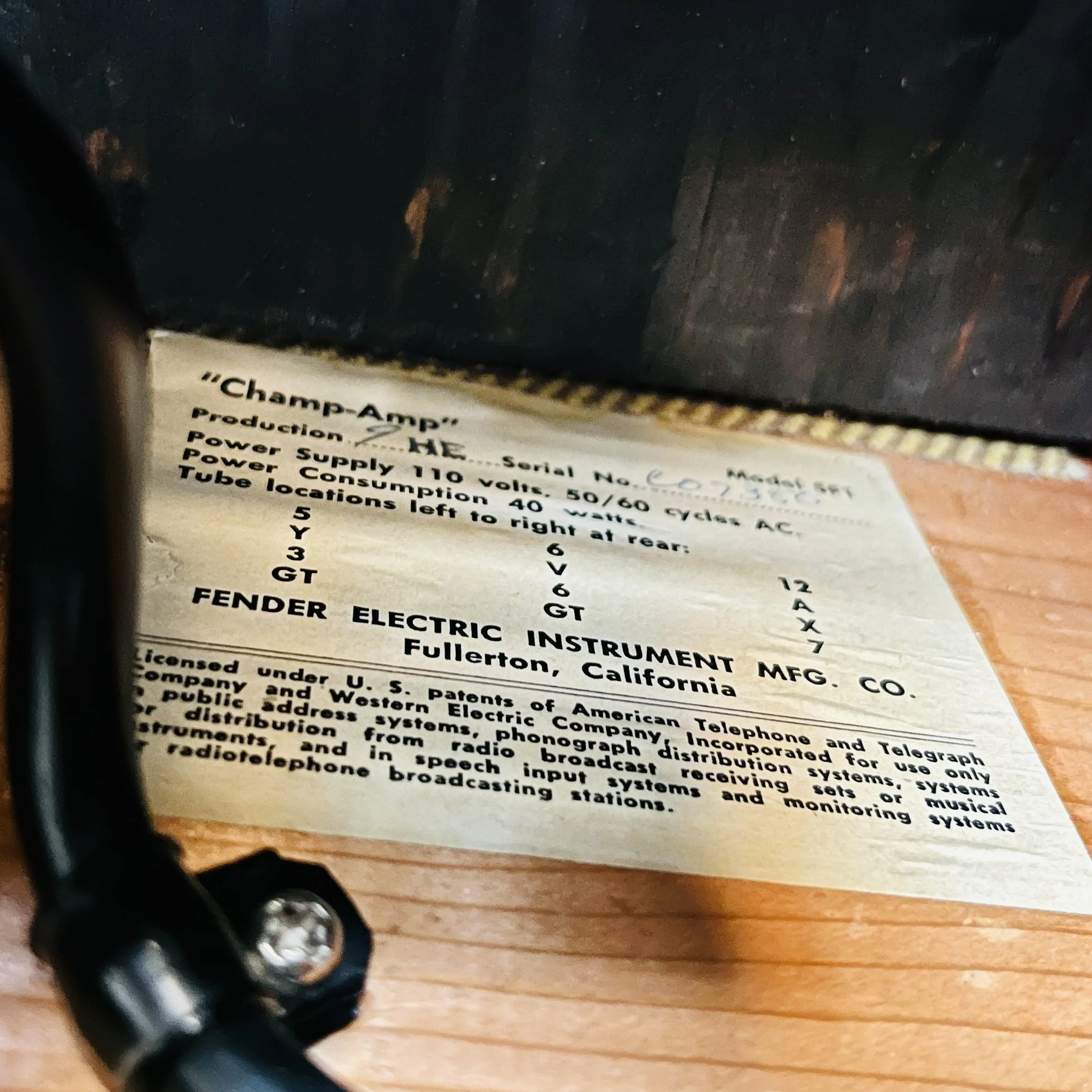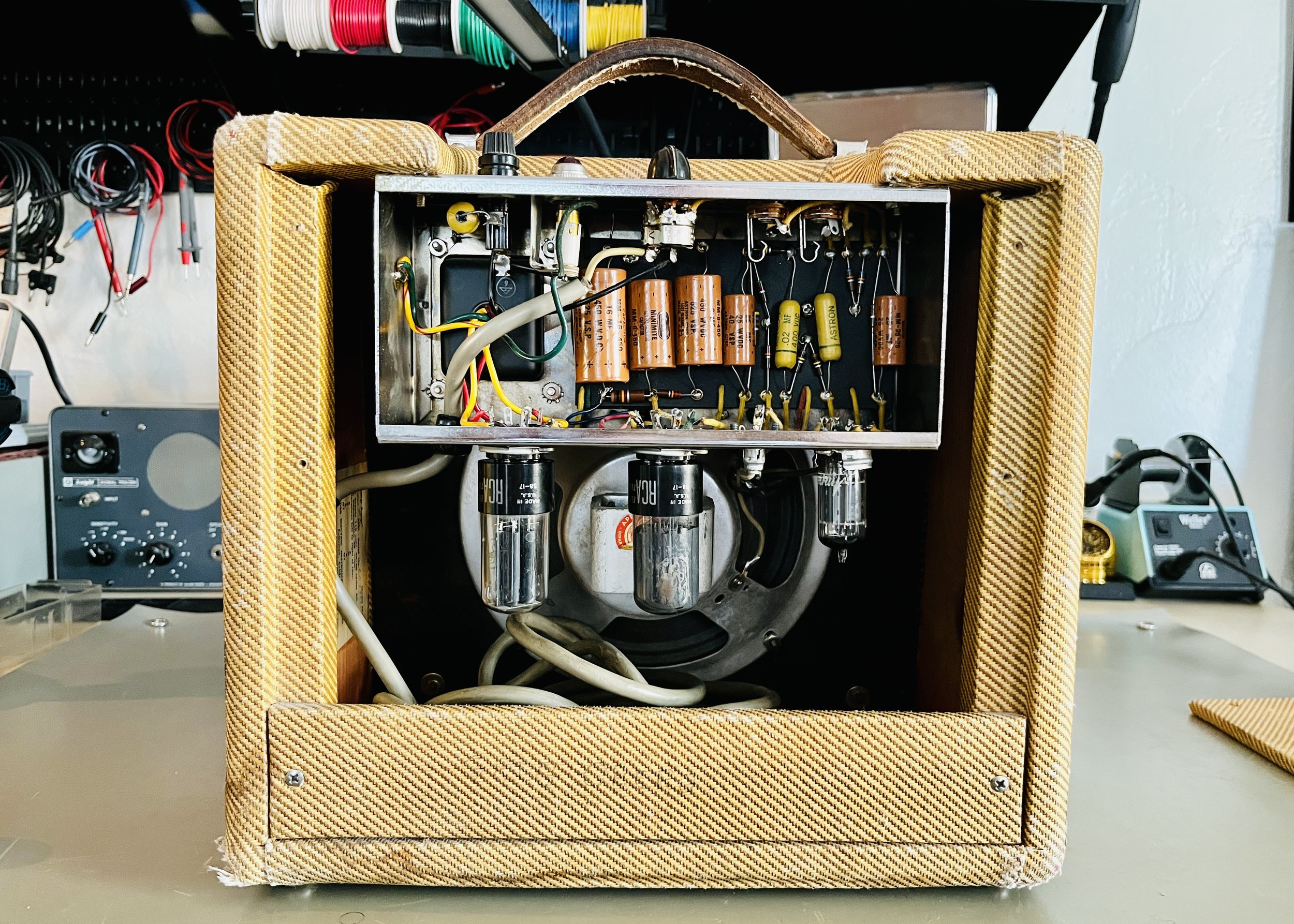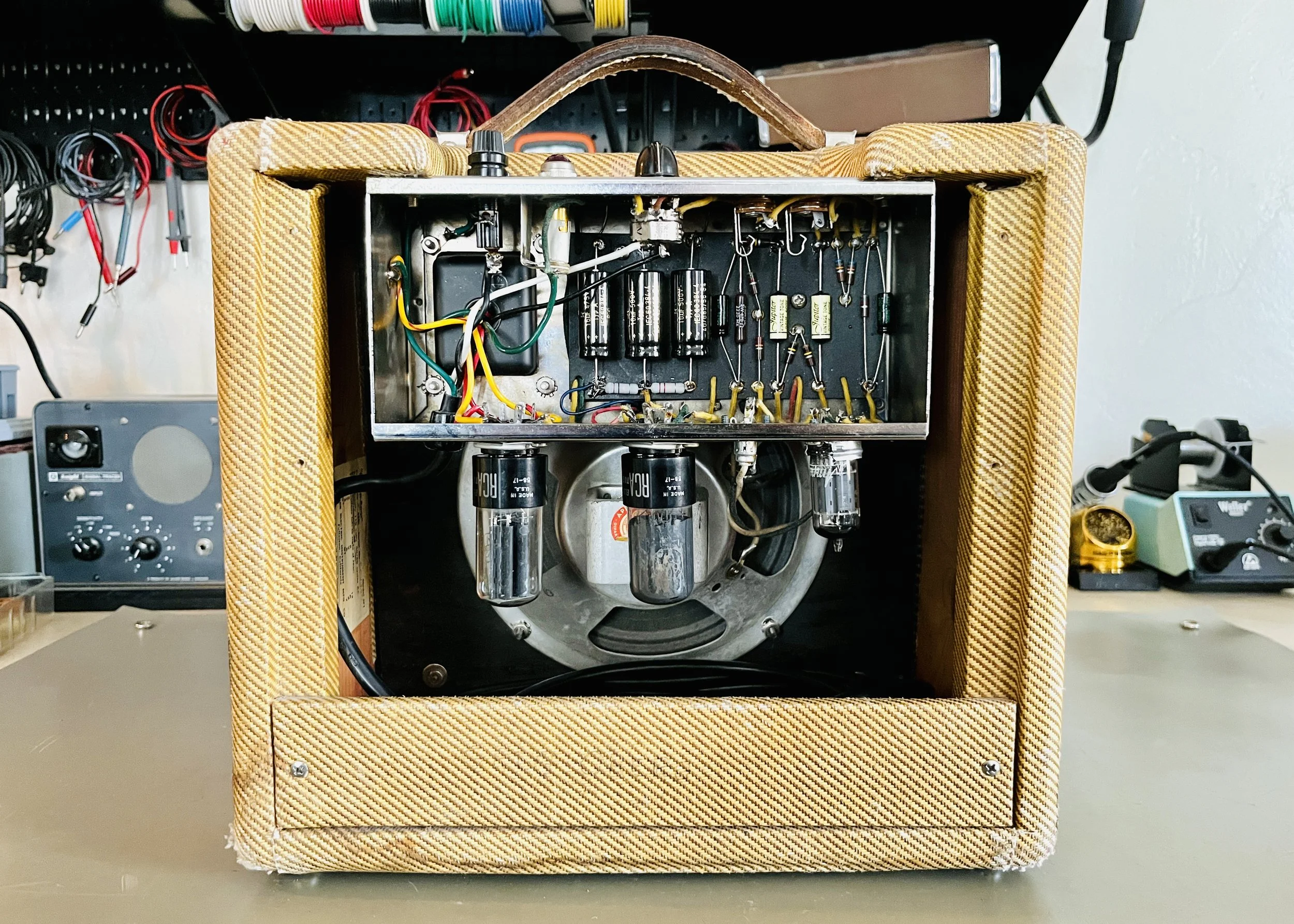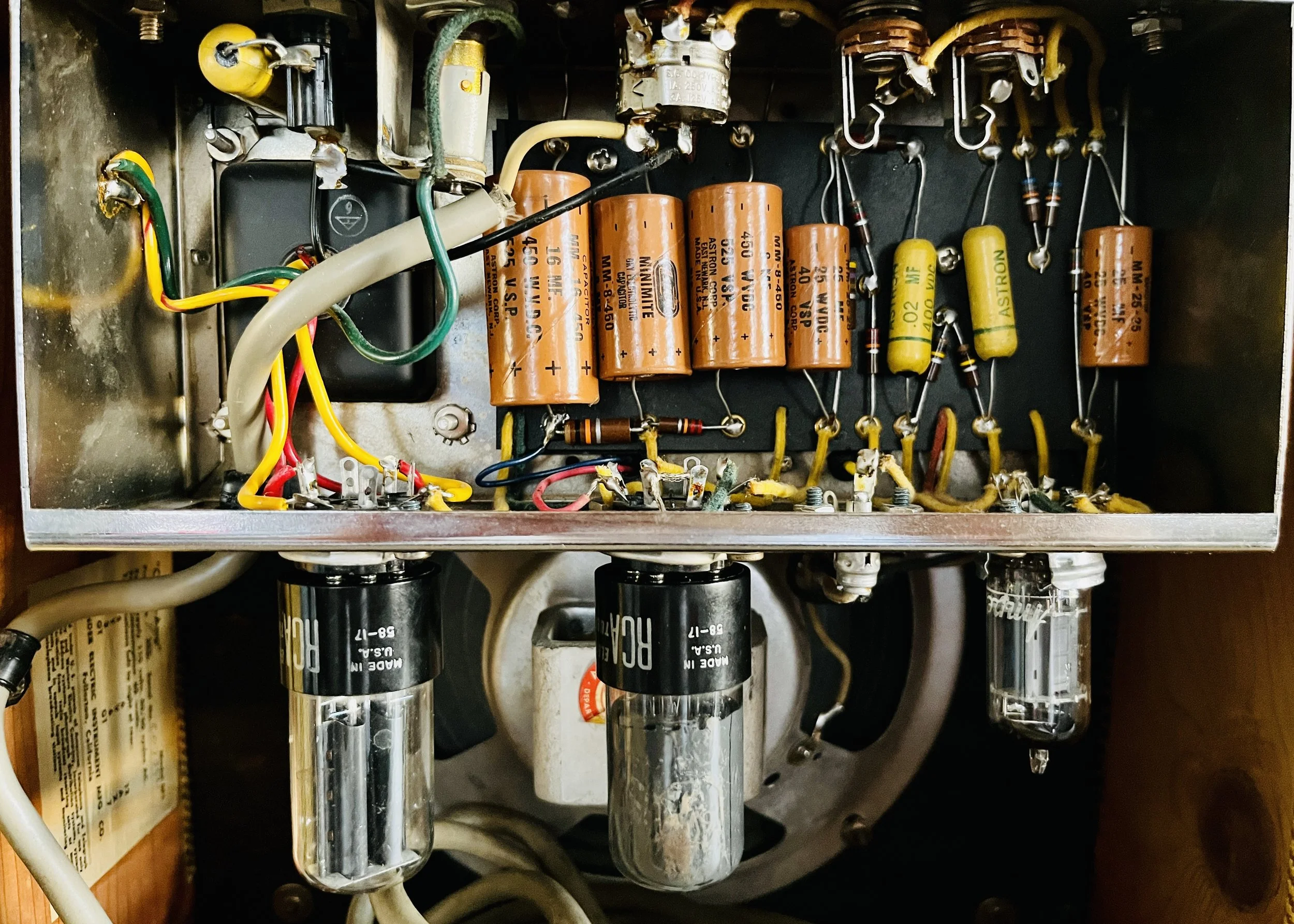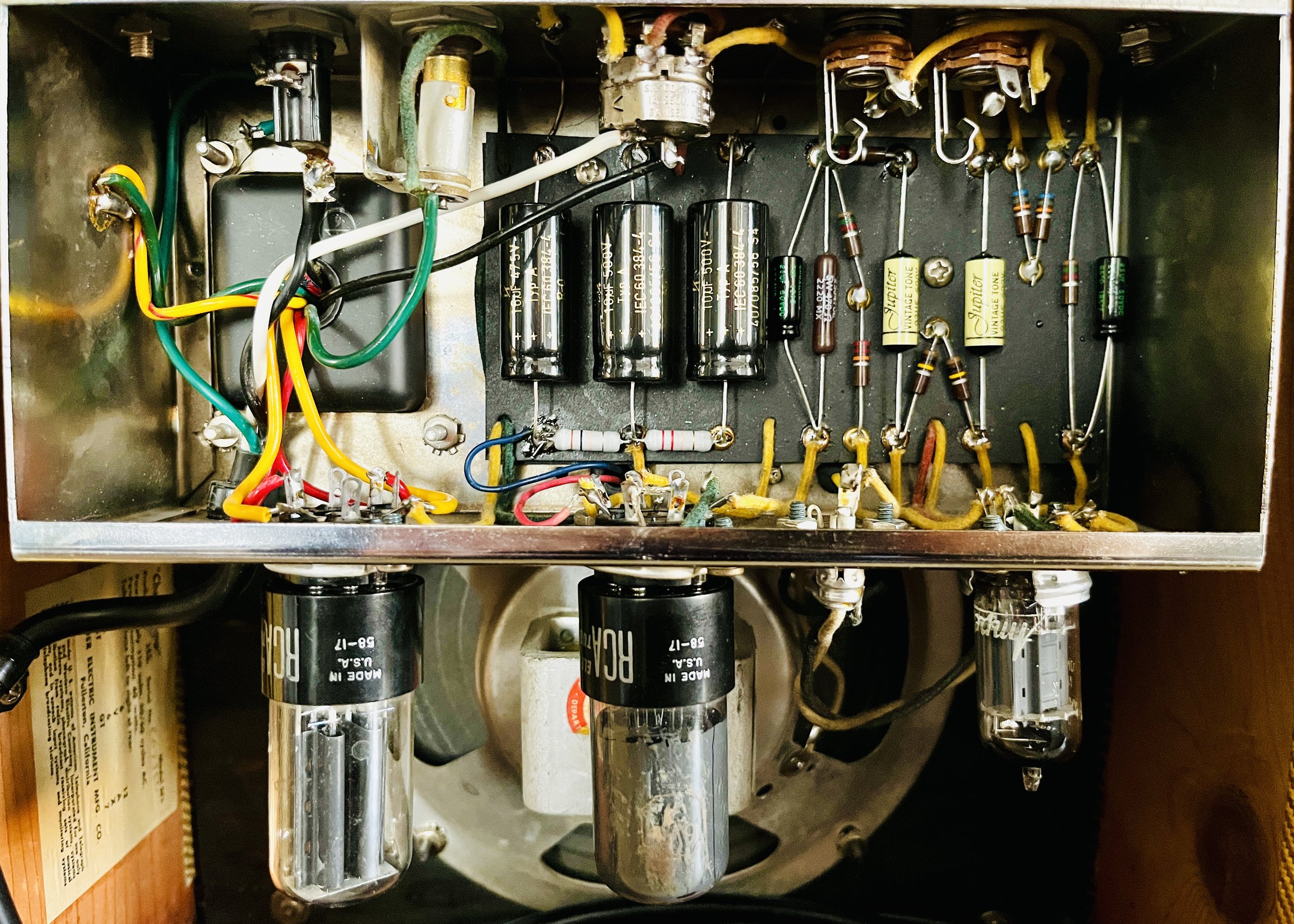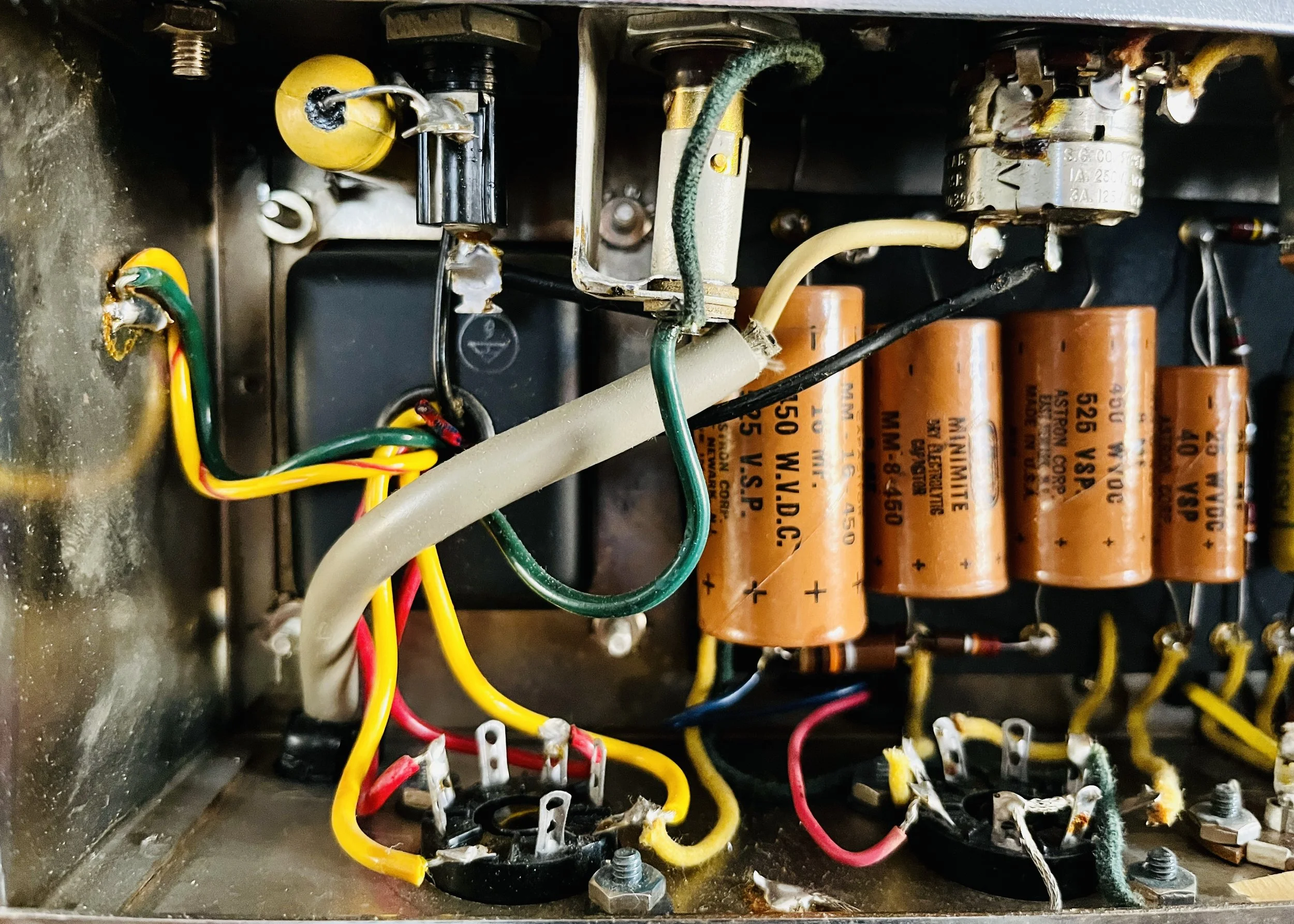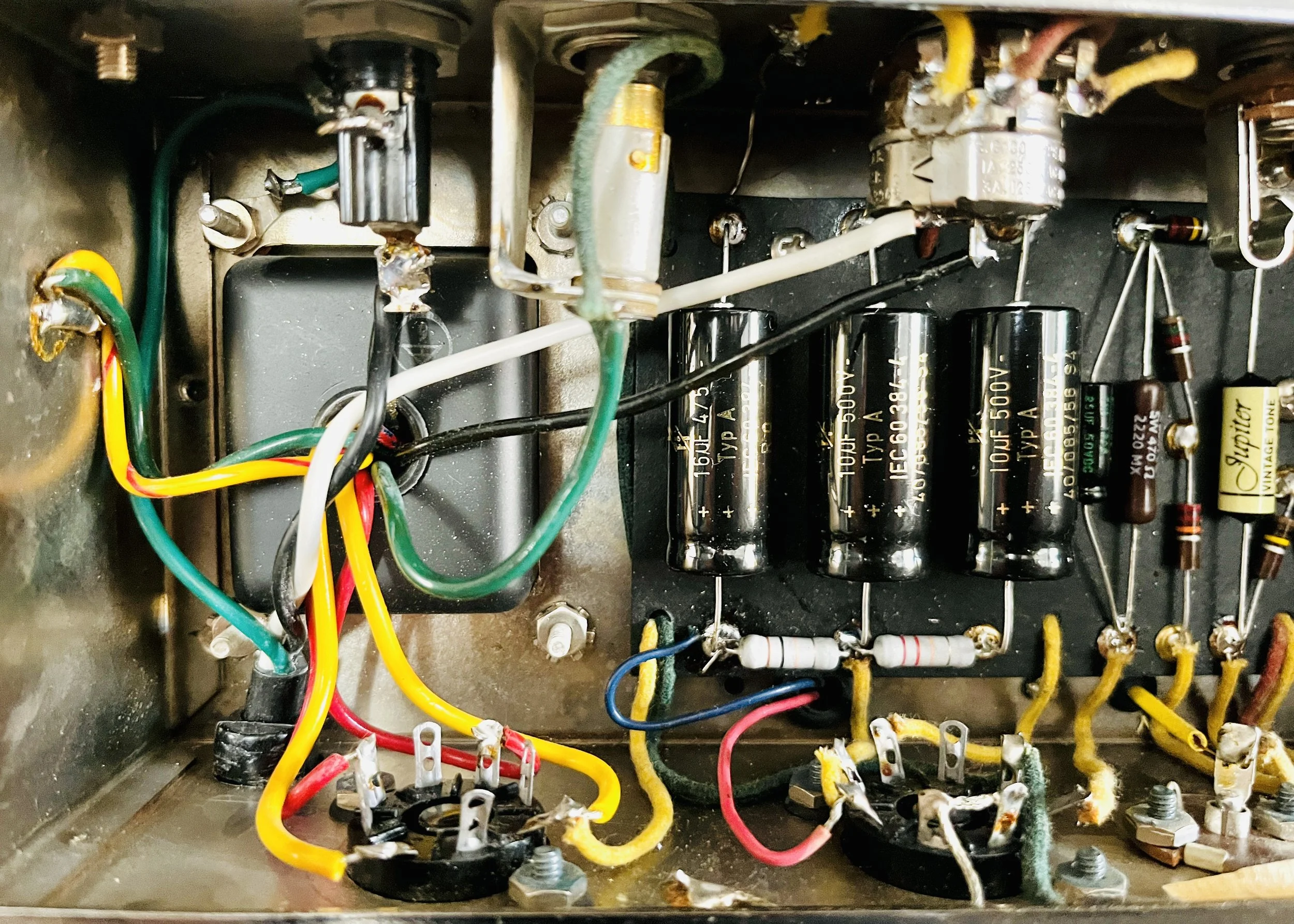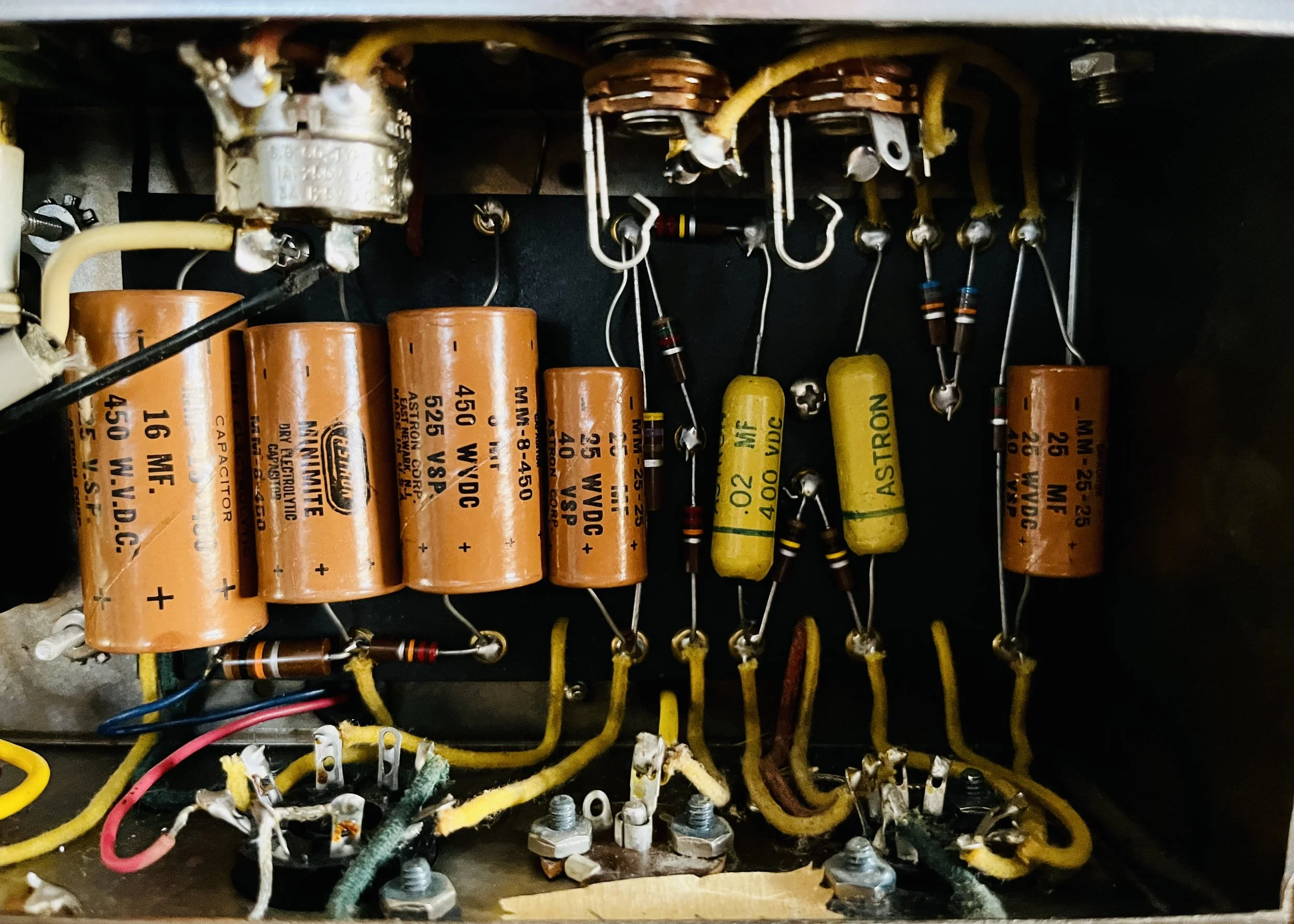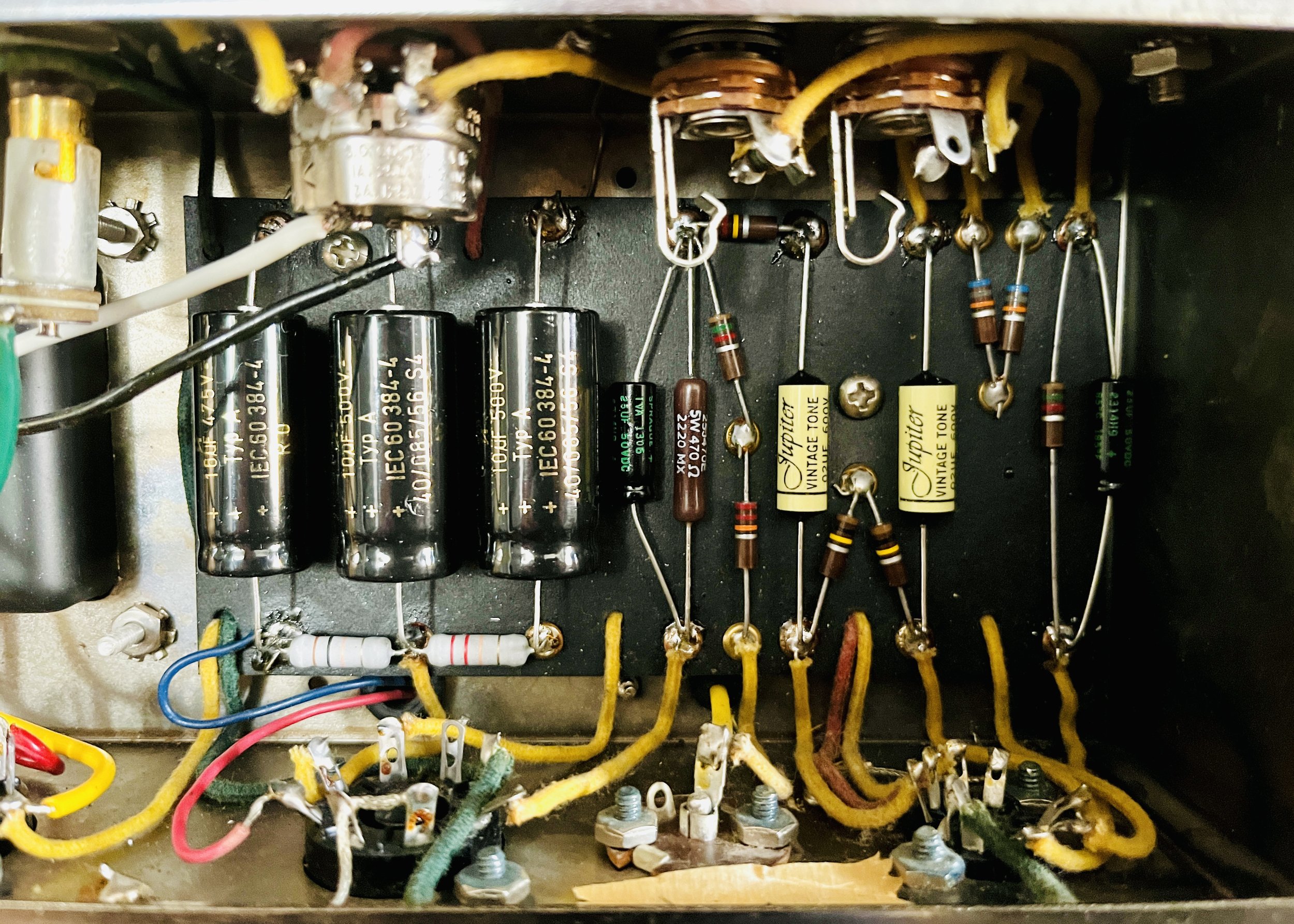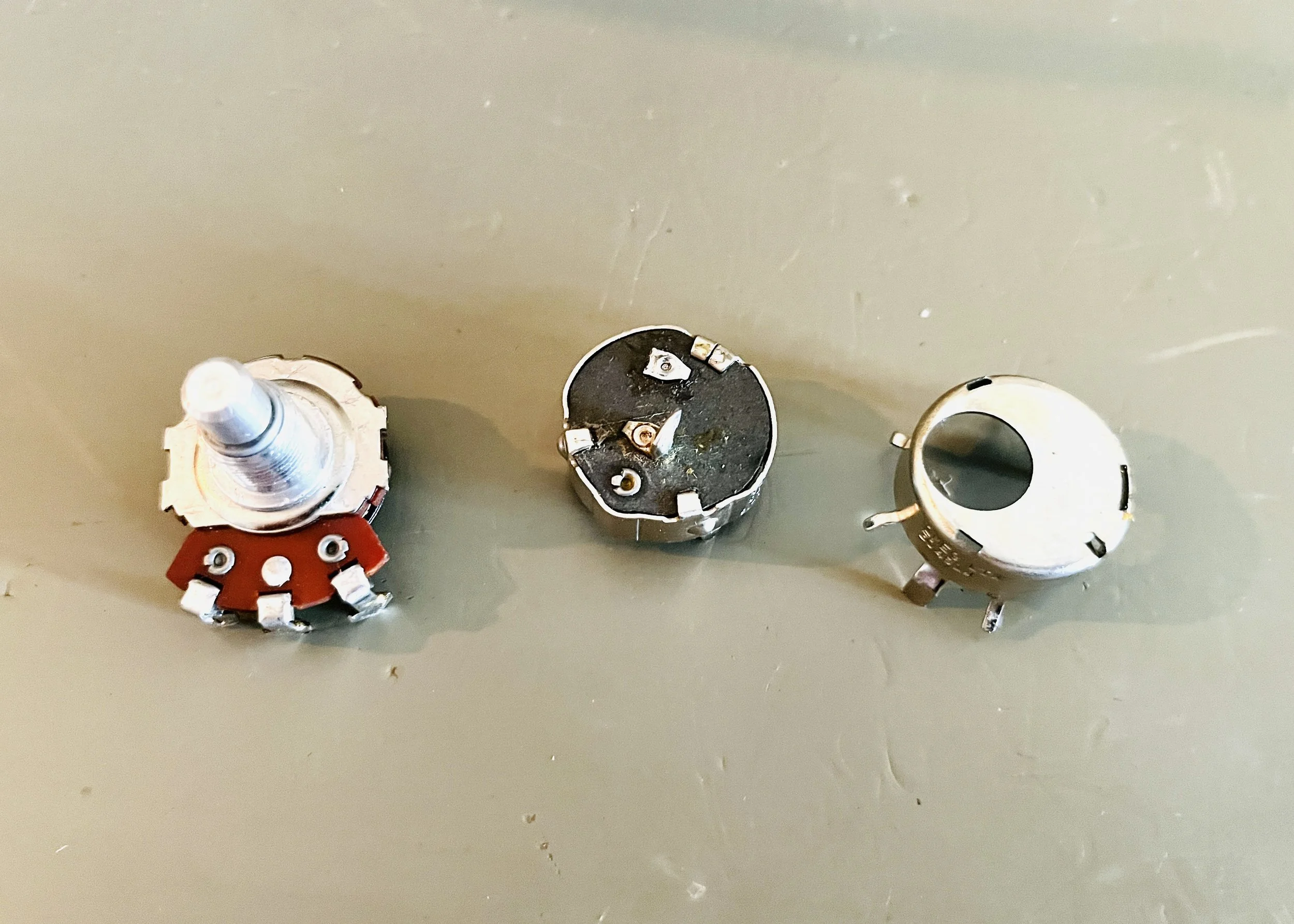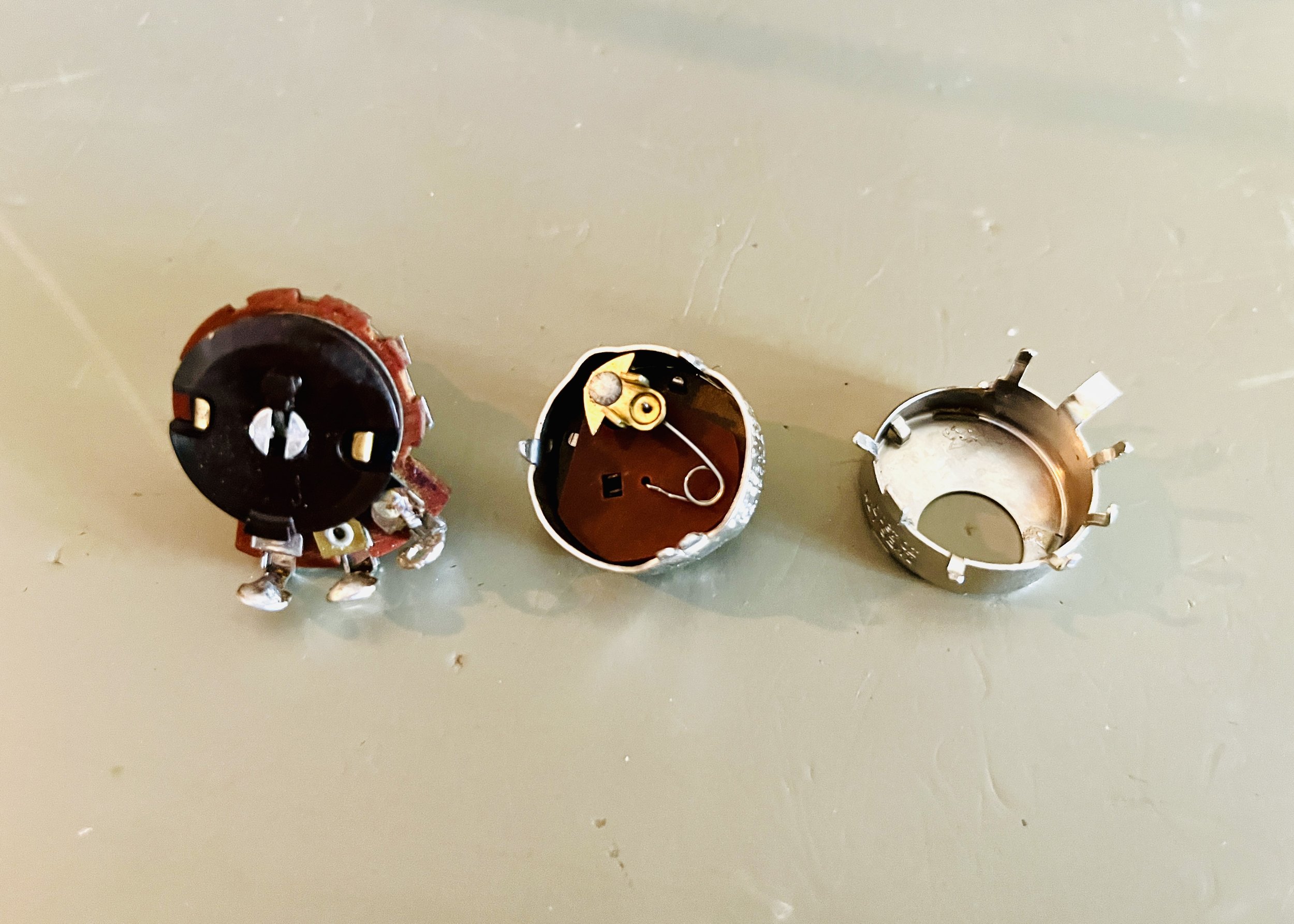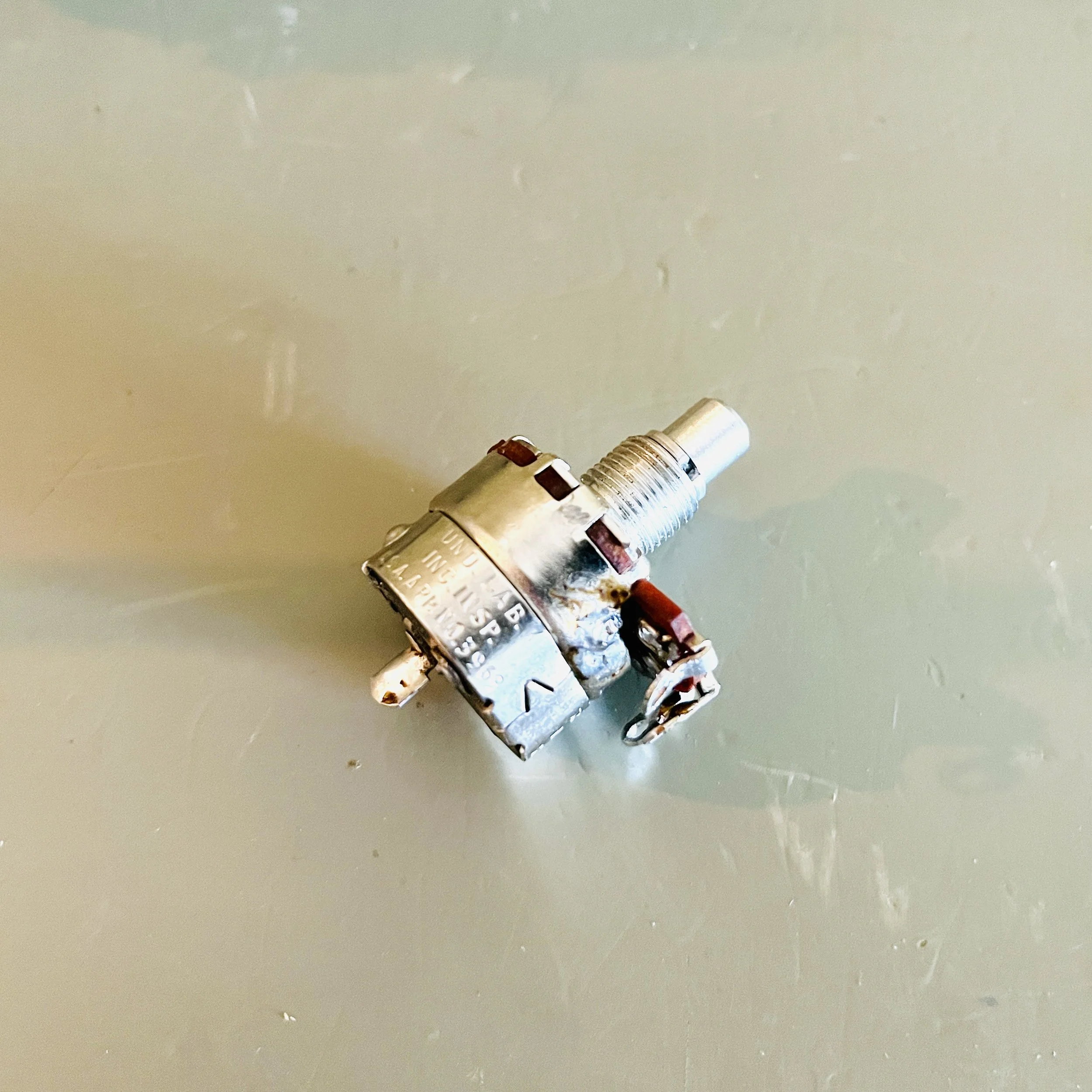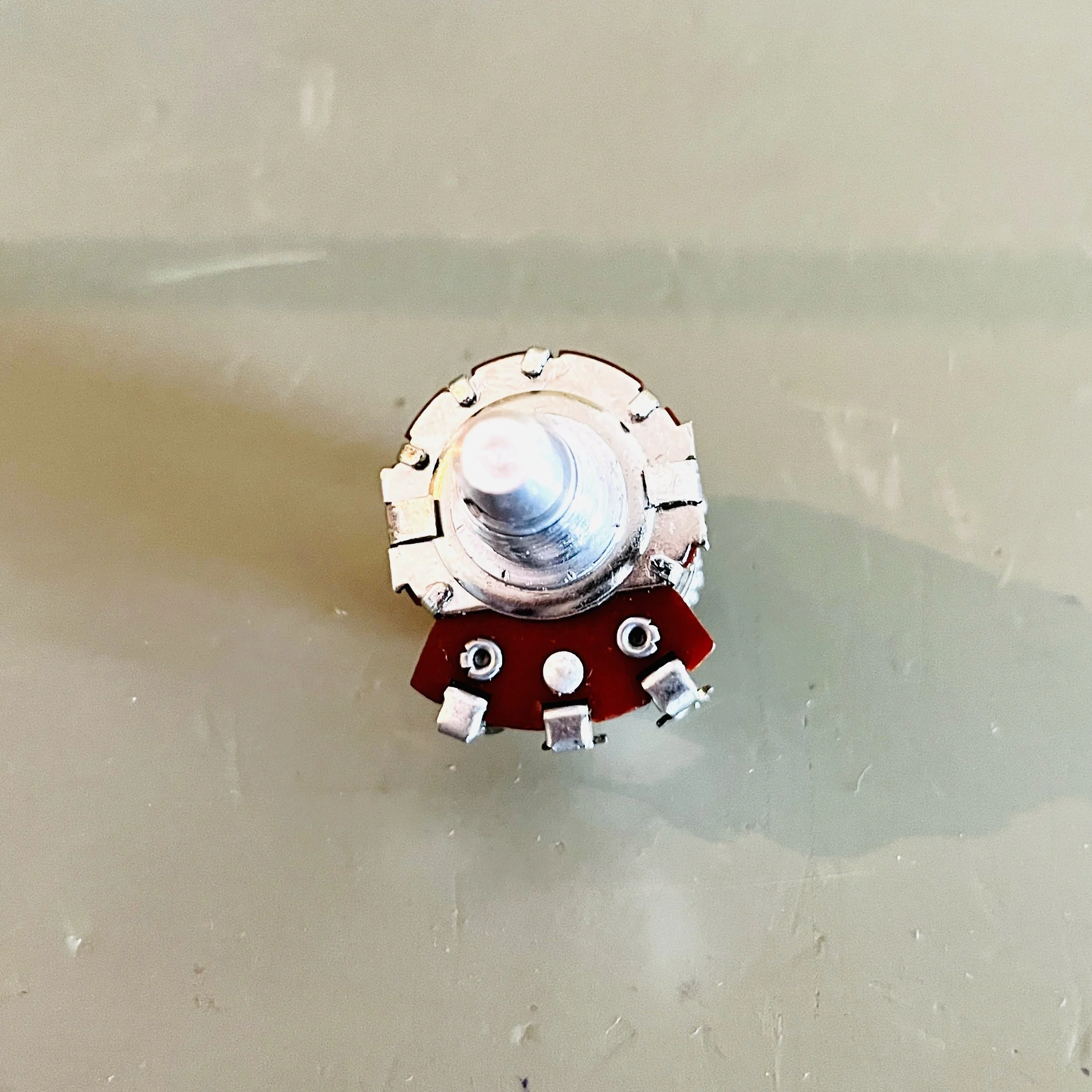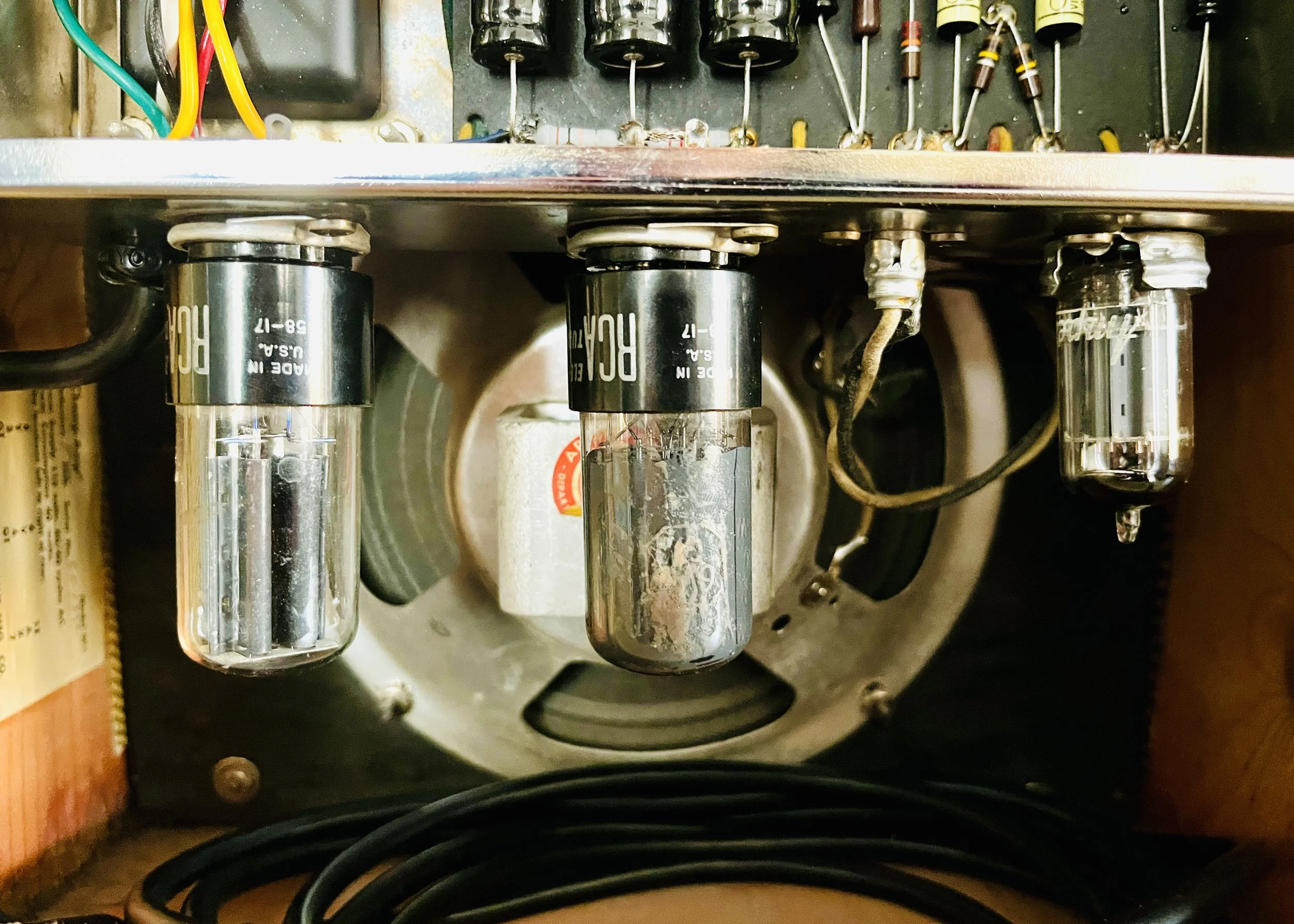1958 Fender Champ
The late-50’s 5F1 Fender Champ is considered the holy grail of low wattage vintage Class A guitar amplifiers. Originally made with students and beginners in mind, these amps would later find a devoted following of professional Blues and Rock musicians. These guitar players often picked up Tweed Champs in pawn shops during the 1960’s and 1970’s (when no one wanted them) and used them in the recording studio to get that cranked amp, everything-on-ten sound for their albums. These are as basic as amplifiers get; 1 preamp tube (12AX7), 1 power tube (6V6GT), and 1 rectifier tube (5Y3GT), with a volume control - no tone controls, and one 8” speaker. With that small 8” Alnico speaker and 4 Watts of power theres no clean headroom here, it’s all about raw sounding overdrive that pleasantly sags and flubs as it gets louder. Notable users include Eric Clapton, Neil Young, and Joe Bonamassa.
This amp came in to my shop in basically original condition. It had leaking filter caps and a replacement 2 prong cord. The customer wanted to use this for everyday playing so the notoriously un-reliable Yellow Astron paper/foil caps also had to go along with the electrolytics and anything else that would make this unsafe to use. This one needed a full restoration including a cap job (electrolytic and coupling), new power resistors, cleaning, 3 prong AC cord conversion, and restoring the Volume/On-Off pot.
Amp was completely restored with the highest quality parts possible. All filter/bypass caps were replaced with upgraded voltage and temperature rated F+T/Sprague Atom brand electrolytics - These are German/US made respectively. All coupling caps were replaced with high quality (Handmade in the USA) Jupiter Yellow Vintage Tone units to replace the original dried out paper/foil Astron caps present since 1958. These caps are exact reproductions of 1950's Yellow Astron brand units originally put in Tweed Fender's. The Outside Foil markings of the Jupiter’s were all aligned to the correct junctions of the circuit - which are the ones that present the lowest impedance. New 2 Watt Metal Oxide power dropping resistors and 5 Watt Wire-Wound Cathode Bias resistors were installed for better reliability and lower noise floor - the original units had signs of heat damage. The rest of the carbon comp resistors tested in spec and were kept in place. A new 3 prong AC cord was installed to replace the old 2 prong unit and the death cap was removed.
The Volume pot with it's combined ON/OFF SPST switch was completely taken apart and cleaned as the switch mechanism stopped working after heat/solder had been applied to it in order to install the new AC cord. One of the solder lugs for the switch was hanging by a thread once the solder was removed, likely from the previous installation of the replacement 2 prong AC cord present in the amp and aging of the metal. This was removed so it wouldn't break off unexpectedly and once re-assembled the AC neutral wire was soldered directly to the rivet on the SPST switch. It was necessary to save the pot as it has a strange combination of values that makes finding a replacement impossible. It is a 1M Linear pot with a rotary SPST switch and has an approx. 340 Deg rotation (including switch actuation). The closest modern replacement parts have a 305 Deg rotation (including switch actuation) and an Audio taper making for a very different sound and functional application.
All of the original tubes tested good and were kept in place. The final lineup was: V1 = AMPEREX 12AX7, V2 = RCA 6V6GT, V3 = RCA 5Y3GT. The 6V6GT's Cathode Bias was measured at 112% Class A Plate Dissipation with a B+ of 390VDC. The tube sockets were all re-tensioned to stop the tubes from jiggling or falling out while they hang upside down - they also were cleaned with a De-Oxit treatment to prevent noise from corrosion.
These amps are rare to see, especially this un-tampered with, so it was great to restore it, hear it, and hopefully make it survive for another 67 years.


